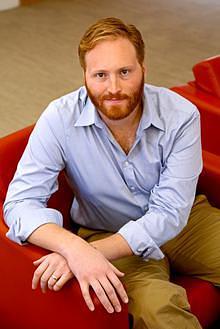
- 05 Dec 2014
This is the first in a series of interviews highlighting the work of experts in the field of complex systems science. Dr. Ben Althouse, an Omidyar Fellow at the Santa Fe Institute, is a mathematical epidemiologist focusing on the dynamics of infectious disease transmission. Ben holds both an ScM in Biostatistics and a PhD in Epidemiology from the Johns Hopkins Bloomberg School of Public Health where he focused on understanding Dengue fever and other sylvatic mosquito-borne viruses (arboviruses) in Senegal using mechanistic modeling and the SIR model. Dr. Althouse also attended the Santa Fe Institute’s Complex Systems Summer School during his graduate studies.
Q: In what specific ways are diseases complex systems?
A. Diseases and disease transmission are quintessential complex systems, with many interacting components, including human hosts, nonhuman hosts, host behaviors and individual immunology, disease vectors and disease evolution. Disease processes can interact with weather and other external factors. Losses of productivity due to self illness or illness of a child, for example, can have massive economic impacts, further changing the course of disease transmission in a population. The entire process is much more than the sum of its parts: components interact in non-linear ways to create complex patterns of disease transmission not explainable by any one factor.
Q. What tools from complexity science do epidemiologists employ to better understand the spread of disease?
A. People like me, mathematical epidemiologists, have relied a lot on dynamical systems, differential equations and network models. More classical disease epidemiologists—people trying to think about obesity and tobacco control, for example—are starting to embrace these tools as well. One example is using agent-based modeling to understand issues like social influence and “food deserts” (i.e., parts of cities or rural areas with no easy access to affordable healthy food). Infectious disease epidemiologists like myself are trying to incorporate more detailed human behavior into our models. How do individuals react when sick and how does that impact transmission? Do I stay home from work? Do I wash my hands more? Do I Tweet about it? Am I more sympathetic or receptive to public health messages? Many facets of human behavior can turn out to be important in understanding disease transmission. Such detailed modeling has been done before in sociology, but hasn’t been done enough in conjunction with actual disease transmission models.
Q: How can complex systems methods help to stop the spread of Ebola?
A: As one example, we’ve started working on projects thinking about using recovered individuals (those that are immune) for work with other individuals infected with Ebola. The idea is that Ebola-recovered individuals feed back into the system as aid workers (doctors, nurses, ambulance drivers, janitors, etc) without further risk of infection, thereby stemming further spread. We can model the rates of new infections and the rates at which individuals become immune and come up with quantitative predictions of the effectiveness of such a strategy. Systems of equations that describe the transmission process in a mechanistic way allow us to understand how disease is spread and give us ways to test new interventions for stopping transmission. For example, what is impact of protective gear use or of a new vaccine? Models can test intervention systems before they’re put in place on the ground. Luckily, we have case data from the WHO and CDC to calibrate our models. We build models informed by reality and then ensure their accuracy by fitting them to case data.
Q: Is this something that infectious disease epidemiologists are working on?
A: Absolutely. There are groups that are funded by National Institutes of Health grants who, in the event of a public health crisis, are tasked with basically dropping everything to work on the crisescrisis. I have been funded in this way before, and . we’re fortunate that The NIH creates lots of funding to train infectious disease epidemiologists. Currently, there are six to seven groups tasked with trying to identify patterns in of the spread of Ebola.”
Q: Several of your articles that I read employ the SIR model in their discussion of the spread of disease vectors. Would that be a tool that could be applied to the Ebola?
A: Yes. The SIR model—where individuals are modeled as either susceptible, infected, or recovered—is a way of thinking about disease transmission from a mechanistic point of view. This model is based on systems of differential equations. and It is different than say, a regression, which is a technique that finds statistical relationships between variables but doesn’t clarify any of the mechanics or processes that give rise to such relationships. The SIR model tries to explain such patterns by modeling the processes that give rise to the patterns. I have used SIR models quite a lot because I think mechanistically and like to understand underlying processes. As I mentioned before, This these models can gives insight into which interventions are feasible and which will have the greatest impact down the line. Interventions useful for for stopping these outbreaks of disease and reducing morbidity and mortality are are of key fundamental importance for the health and wealth of societies. I am glad I get the opportunity to study them.
